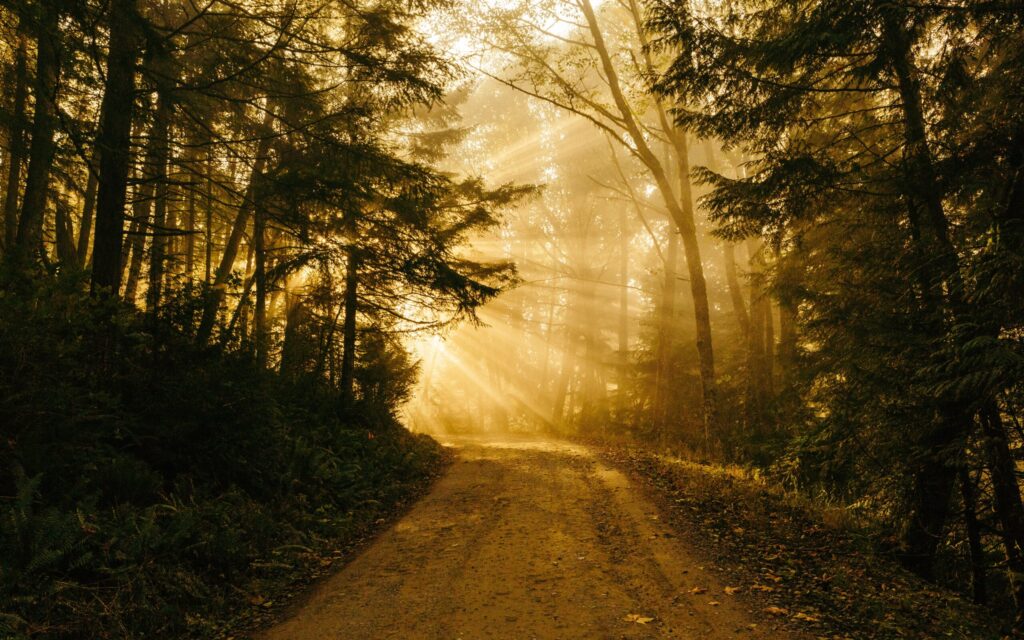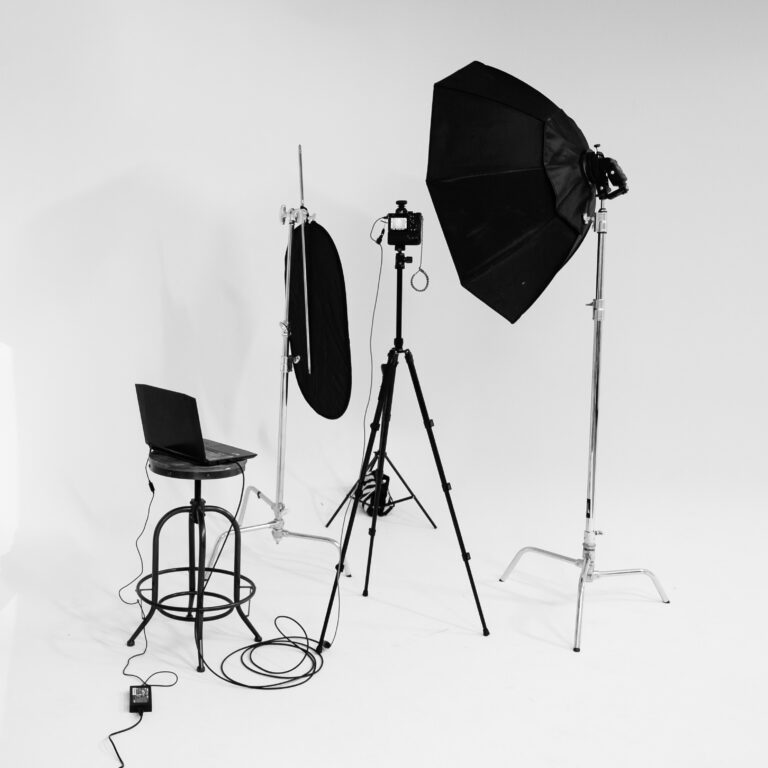This post may contain affiliate links which means I may receive a commission for purchases made through links. I will only recommend products that are valuable to my readers! Your participation has no effect on pricing.

Lighting for Beginner Photographers: A Comprehensive Guide
Photography is an art that revolves around capturing, modifying, manipulating, and altering light. There are a ton on methods and techniques, some are fairly simple and others take some knowledge and advanced know-how. We will explore a lot of that now.
For beginners stepping into this captivating realm, understanding lighting and its techniques is fundamental. The way light interacts with your subject can drastically alter the mood, tone, and overall quality of your photographs. In this guide, we’ll delve into different types of lighting, essential lighting equipment, and techniques that will aid beginners in harnessing the power of light to capture stunning images.

Natural Light: The Photographer's Best Friend
One of the most accessible and beautiful forms of lighting is natural light. It’s readily available, free, and can produce captivating results.
The soft, diffused light during sunrise and sunset, commonly known as the “golden hour,” casts a warm and gentle glow that’s ideal for portraits and landscapes. being aware of how your photographs can react and be influenced by this incredible time of day, and harnessing the natural light by positioning your subject in the light source or using diffusers and reflectors can help manipulate the light for the desired effect. Experiment with different angles, positions of the sun, and how it is effecting your composition. This will be key to your learning curve. Take notes, because you are going to gain a wealth of experience practicing with your photography.
Work with natural light at different times of day. You will learn what effects light has on your overall shots. Races and sport photography is incredible with more direct light from overhead. Some shots are ideally done when it is overcast. Practice and experimentation are key to learning how to best use natural lighting.

Understanding Artificial Light Sources
Artificial lighting expands the creative possibilities for photographers. It includes continuous lighting and strobes or flashes. Continuous lighting, such as LED panels or tungsten lights, provides a consistent illumination that helps in understanding how light falls on the subject in real-time. On the other hand, strobes or flashes emit brief bursts of intense light, allowing freezing motion and controlling the exposure precisely.
It is advisable that all aspiring photographers learn about light color temperatures and how they effect the final image. Getting a grasp on white balance is also key when it comes to using artificial lighting. Since Color Temperature casts light in different colors knowing and comprehending when and what type of artificial lighting fits into your shoot the best.
 Work with different light sources. Experiment with how they effect your photographs. Continuous lighting like LED and Florescent will have a much different color temperature than Strobe and Speedlight (Flash units) lighting.
Work with different light sources. Experiment with how they effect your photographs. Continuous lighting like LED and Florescent will have a much different color temperature than Strobe and Speedlight (Flash units) lighting.
Light Modifiers: Softboxes, Umbrellas, Reflectors, and Diffusers
Modifiers play a crucial role in shaping and softening artificial light sources. By modifying the light and light sources, a photographer can slightly or greatly manipulate the final outcome of the shot.
 Softboxes: The modifiers are usually placed directly onto the light source being used. Resembling a fabric-covered housing, they diffuse harsh light to create a softer, more flattering effect on the subject. They also control the direction of the light as to concentrate it directly upon the subject.
Softboxes: The modifiers are usually placed directly onto the light source being used. Resembling a fabric-covered housing, they diffuse harsh light to create a softer, more flattering effect on the subject. They also control the direction of the light as to concentrate it directly upon the subject.
 Umbrellas: Although their us is similar to soft boxes, umbrellas are available in either a reflective (bouncing light), or a shoot-through design (diffuse light), to provide a gentle and even illumination. Diffusers, placed in front of the light source, scatter and soften the light for a more natural and pleasing look.
Umbrellas: Although their us is similar to soft boxes, umbrellas are available in either a reflective (bouncing light), or a shoot-through design (diffuse light), to provide a gentle and even illumination. Diffusers, placed in front of the light source, scatter and soften the light for a more natural and pleasing look.
 Reflectors: As the name implies, reflectors bounce or reduce the amount of light that is hitting the subject being photographed. Reflectors are widely used outdoors and indoors to control the actual direction light is coming from, and what temperature the reflected light will be. Reflectors are commonly seen in white, black, silver and gold. Each has its place in light modification.
Reflectors: As the name implies, reflectors bounce or reduce the amount of light that is hitting the subject being photographed. Reflectors are widely used outdoors and indoors to control the actual direction light is coming from, and what temperature the reflected light will be. Reflectors are commonly seen in white, black, silver and gold. Each has its place in light modification.
Practice, experiment, and take a ton of shots using different methods of artificial lighting. The final outcome will be a drastic improvement in your photographic skills and knowledge.
Mastering Three-Point Lighting
Three Point Lighting: This is the most basic form of lighting, especially for portrait photography or controlled indoor settings. Understanding three-point lighting is invaluable. This classic technique involves three primary light sources: the key light, fill light, and backlight.
 Key Lighting: The key light serves as the primary light source, illuminating the subject. The key light is placed in front and at an angle to the subject. This is usually the brightest light in the sequence, but as with any rule, it isn’t always the case.
Key Lighting: The key light serves as the primary light source, illuminating the subject. The key light is placed in front and at an angle to the subject. This is usually the brightest light in the sequence, but as with any rule, it isn’t always the case.
Fill Lighting: Fill light softens shadows created by the key light. This light is usually placed in a mirror image of the key light.
Back Lighting: Lastly, the backlight separates the subject from the background, adding depth and dimension to the image as well as giving hilights to hair, clothing and bare skin.
Creating Dramatic Effects with Low-Key and High-Key Lighting


As you can see in the two images above, lighting can produce some amazing effects on a photograph. The use of low and high key lighting tells a distinct story about your photograph and its composition.
Low-key lighting: Involves creating predominantly dark tones, emphasizing shadows and creating a mysterious and dramatic atmosphere. Achieved by using minimal light and controlling the shadows, it’s perfect for conveying mood and depth.
High Key Lighting: In contrast, high-key lighting utilizes bright, even illumination to eliminate harsh shadows, resulting in a cheerful and ethereal look. High key lighting is often used in product photography, fashion photography, and child and newborn photography.
Practical Tips for Beginners
Experimentation is key when learning about lighting in photography. Start by observing how natural light interacts with your surroundings at different times of the day. Gradually introduce artificial lighting and modifiers, experimenting with various setups to understand their impact on your images. Practice regularly and review your work critically to gauge how different lighting techniques influence the overall quality of your photographs.
 As your self critique enlightens your eye for light and its effects, begin to experiment with introducing artificial light with your natural light situations. Using both lighting sources together can enlighten you to a whole new world of lighting effects. There are some very profitable niches that use this blending technique regularly and to great effect.
As your self critique enlightens your eye for light and its effects, begin to experiment with introducing artificial light with your natural light situations. Using both lighting sources together can enlighten you to a whole new world of lighting effects. There are some very profitable niches that use this blending technique regularly and to great effect.
The blending of ambient or natural light with artificial light is very popular for outdoor family portrait sessionsand pet photography. Another niche that utilizes the blend of lighting is architectural, interior real estate photography, and interior design photography.
Choosing the Right Lighting Equipment
At this stage in your evolution as a photographer, you may or may not have already decided on a niche or area of expertise. As a beginner, investing in versatile and user-friendly lighting equipment that doesn’t break the bank is crucial. But there are a few things to take into consideration before you start buying equipment.
Consider starting basic with your lighting devices. There are beginner kits comprising of continuous LED that have tripod stands and basic diffusers. Check out the links we are providing in this article.
Then again, you may only need the versatility of a speedlight flash or two. They can be used with softboxes or umbrellas for diffusion.
As you progress and gain more experience, you can explore more advanced lighting setups tailored to your specific photography interests.

Wrapping things Up
Mastering lighting in photography is a continuous learning process. It’s about understanding how light shapes your subject and learning to manipulate it to achieve your desired results. As a beginner photographer, grasp the basics of natural and artificial lighting, experiment with different techniques, and gradually expand your knowledge and equipment. Remember, practice, patience, and creativity will ultimately lead you to capture breathtaking images through the art of lighting.
Practice, experiment, be adventurous, but mostly…Have Fun! Photography is one of the greatest art forms I have ever had the privilege of being a part of. With some practice and time, you will surely feel the same way!
Keep shooting, be creative, and always have a vision for your mind’s eye!
